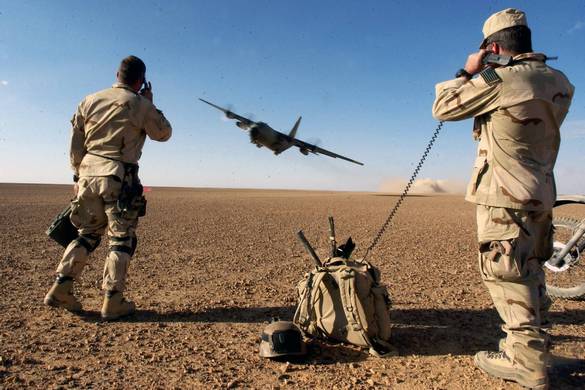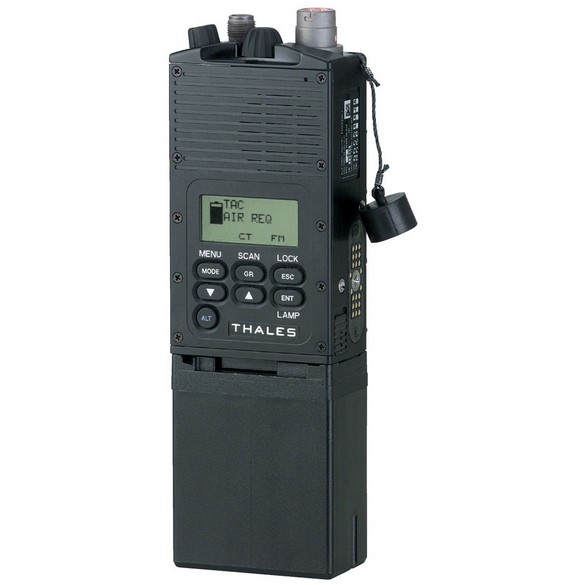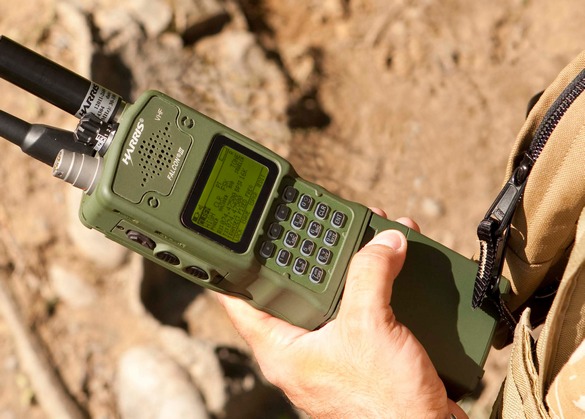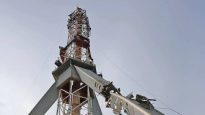All about programmable parameter radios (SDR)
13.01.16
In modern conditions of wars and armed conflicts, the role of the communications system in controlling groupings of troops (forces) in the theater of military operations is significantly increasing. It is the communication system, performing the tasks of ensuring information exchange in the control system, that must quickly respond to changes in the situation, dynamically change its structure, and improve construction methods and operating modes [1].
Military communications have come a long way, starting with heliographs, flags and smoke signals, and carrier pigeons. The 20th century was a time of phenomenal explosion in communication technologies. Radio has radically changed the process of transmitting information. Now, changes are happening even faster with the advent of the digital age.
Let’s consider the classification and brief description of military radio communications based on the operating frequency range.
Ultra-short waves (VHF) – 30-300 MHz (other names – very high frequencies (VHF), Very High Frequency – VHF). Military radios mainly operate in the lower part of this range – approximately 30 to 110 MHz. The advantage of this frequency range is that radio waves are able to bend around small obstacles, slightly bend around the earth’s surface, and communication is possible even in the absence of direct visibility between correspondents. At the same time, the communication range using relatively low masts (about 10 m) and transmitters with a power of several tens of W can be up to 50 km, and when using portable stations – up to approximately 10 km.
VHF radios are widely used at the company-battalion radio network level. They can also be used to provide communications in a platoon-squad (squad), but recently radio networks of small units (squads) have been proposed to be created in a higher frequency range.
Ultra High Frequency (UHF) – 300 MHz – 3 GHz (Ultra High Frequency – UHF). This frequency range corresponds to decimeter waves – from 10 to 100 cm. In this case, radio stations are usually smaller and lighter (often called PRC radio stations – personal radio communications). To communicate, as a rule, direct visibility is necessary, so the communication range is only a few (1-2) kilometers, however, stable communication can be ensured in conditions of multiple signal reflections, i.e. in a city environment. Equipping each unit soldier with such radios has significantly improved the interaction of small units in difficult combat situations. The use of UHF equipment during combat operations in the city has proven itself well.
In addition, to increase the communication range, developers of military radio communications equipment offer the configuration of one of the network radio stations as a repeater or two stations in repeater mode. As a rule, they try to place them as high as possible to provide coverage in the required area.
Short wave range (HF) – 3-30 MHz (other names: High Frequency – HF; high frequencies – HF). HF backpack radios still play an important role in organizing radio communications at the tactical control level. The HF range involves communication by reflecting signals from the ionosphere, so the communication range for low-power backpack stations can reach up to 300 km or more. With the development of satellite communications, many experts predicted that HF communications would play the role of the last reserve. Indeed, the throughput of a narrowband HF channel (3 kHz) is very low – at best, a little more than 10 kbit/s. The revival of the role of HF communications for organizing command and control began as a result of the experience of combat operations in Afghanistan and Iraq, where satellite communications could not always provide a sufficient level of reliability.
HF radio stations have also begun to be widely used because the introduction of modern technologies has made it possible to significantly reduce their weight and size, as well as increase the data transmission speed. Another advantage is the use of automatic link establishment (ALE). This means that an ordinary soldier who does not have special technical knowledge can fully operate the HF radio.
In addition to “classical” radio means (the outdated term is single-channel, that is, personal), when building a communication system of connections and associations, broadband wireless access (BWA) means operating at frequencies of 4-5 GHz, and satellite stations are widely used. communications operating, as a rule, in the so-called Ku-band (10-12 GHz). The outdated name for such radio stations is multichannel, since their bandwidth can be used simultaneously by many subscribers at the control point. Based on the principle of organizing the radio wave propagation path, BWA means correspond to radio relay communications, and the communication lines created by them are usually designated HCLOS – High Capacity Line of Site.

The AN/PRC-154 radio supports operation in the Mobile Ad Hoc Network (MANET)
Principles of construction and operation
Modern radio stations can transmit not only voice messages, but also exchange data, including images and even video, at a fairly high speed. Indeed, a software-defined radio (SDR) opens up new horizons of capabilities in combat conditions. The principle of SDR technologies is merging the capabilities of a computer and a radio station. Until relatively recently, radio stations had only a set of built-in functions. An SDR device uses multiple layers of software to perform various tasks, just like a desktop computer, such as word processing, Internet browsing, and database management, depending on the user’s preferences.
The SDR operating system used in the US is called Software Communications Architecture (SCA), and it allows SDR devices to exchange information with each other. Signal encryption is reprogrammable and flexible. For example, Single-Channel Ground and Airborne Radio System (SINCGARS) encryption algorithms can be loaded onto the SDR radio, but other software can be loaded if required. Thus, SDR offers greater functional flexibility based on a single hardware platform. Very important is the ability to use one hardware platform of different classes of modern radio communications: Soldier Radio Waveform (SRW), Wideband Networking Waveform (WNW), Mobile User Objective System (MUOS), Tactical Targeting Network Technology (TTNT), and others that will be developed in future. For example, SRW provides network connectivity, while WNW supports long-distance radio communications.

AN/PRC-148-SDR – портативная, тактическая радиостанция MBITR (Multiband Inter/Intra Team Radio)
SDR benefits
A key benefit of SDR is the interoperability between legacy radio communications and modern systems. Military communications systems have always been characterized by conservatism and the renewal of the fleet of radio communications in the armed forces, even in the most developed countries, will never be able to match the pace of the market for modern mobile phones and other communication tools. This is obvious, because equipping units with more modern radio equipment does not bring any profit, other than increasing combat effectiveness. It is therefore important that new and old systems can work compatible.
The radios used in some countries may belong, for example, to the era of the Vietnam War or Afghanistan. Interestingly, at one time the US military had up to 200 different types of radios, none of which were designed to communicate with each other. Obviously, the radio assets of the Army, Navy and Air Force must be compatible. SDR technology can provide this capability. It involves adaptation to a range of protocols so that different radio models and networks can interoperate. This is important as multinational units increasingly operate in large-scale, multinational operations, such as the International Security Assistance Force (ISAF) in Afghanistan. Having a radio for communication is important not only for the military and its allies, but also for civilian agencies such as the police.
The radio interface is also being improved. The operator does not need to have special education or undergo additional training to use the device.
The latest technologies perform their tasks automatically without requiring user input. For example, a station can act as a repeater or take part in creating wireless data networks while moving. In this case, the operator does not know anything about this and can use the station for communication at any time.
Another advantage of SDR is the ability to provide many functions and services in one compact package. One system can now do jobs that previously would have required multiple radios. For example, data about military personnel with an SDR radio and built-in global positioning systems (GPS – Global Positioning Systems) can be broadcast on the network, so that all network correspondents, or, for example, only the commander, can know and even see on a real map of the area (when connecting a tablet or computer) where they are. Such a system can even monitor a person’s vital parameters using special sensors and perform other equally important functions.
The service life of a military radio is typically 15-20 years, so another huge advantage of SDR is the ability to be quickly upgraded. This extends the life cycle of the radio as it can be adapted to new technological capabilities and services simply through a software change.
Today’s military needs devices that are compact, lightweight, and fast, while interoperating with legacy narrowband systems. SDR uses embedded computer technologies, and relies on advances in the field of digital signal processing (DSP – digital signal processing), semi-programmable gate arrays (FGPA – field-programmable gate arrays), developments in the field of program code generation.
Today, a typical battery measuring 40 x 75 x 75 mm provides 8-10 hours of radio operation. Radio batteries have progressed from nickel-cadmium, through nickel-metal hydride, to the most common today – lithium-ion. Fuel cell technology is another area that will impact radio mobility. We will probably see revolutionary changes in this area in the next ten years.

Portable radio RF-7800V-HH Falcon III
Analysis of existingradio equipment
An interesting solution in the field of SDR is the AN/PRC-154 radio station (Rifleman Radio, a General Dynamics product), thanks to which military personnel in a combat zone are users of a mobile ad hoc network (MANET – Mobile Ad Hoc Network). The systems and objects of this network are automatically configured, internal connection allows signals to be relayed from one AN/PRC-154 to another, until a gateway is received to a satellite communication station or the Internet, or the necessary internal connection is established in the network.
AN/PRC-148-SDR is a portable, tactical MBITR (Multiband Inter/Intra Team Radio) radio from Thales Communications widely used in the armed forces of NATO countries. Thales Communications recently started production of the second generation MBITR2. This radio station simultaneously combines two channels – broadband tactical Internet SRW and voice communications of narrowband networks. Thales is positioning MBITR2 as a cost-effective upgrade option for the AN/PRC-148.
Another popular product is the AN/PRC-117G Falcon III from Harris Corporation. It is known that the Australian Department of Defense has decided to supplement the old communication systems with radios AN/PRC-117G, AN/PRC-117F, as well as AN/PRC-150 in a backpack version and AN/PRC-152 with adapters for installation in more than 1000 armored vehicles . The country recently received the AN/PRC-152 Falcon III, multi-band portable tactical radios that support SINCGARS, voice and data, and have built-in GPS receivers.
Interestingly, different “types” of war place different demands on radio communications. For example, the Pakistani military’s tactics have undergone marked changes driven by actions against insurgents and Islamic extremists rather than the expected massive armored confrontation with India. Harris Corporation currently markets three additional products: the RF-7800H Falcon III, RF-7800-HH Falcon III handheld radios, and the RF-3590 ruggedized tablet, designed for use in small force warfare. It should be noted the appearance of Falcon III radio stations, namely RF-7800H, RF-7850M-HH, RF-7800V-HH, RF-7800S, in service with domestic law enforcement agencies.
Development directionsSDR
With the development of technology, communication means are becoming more and more compact. For example, SDR systems can be built into wrist devices or head-mounted displays. Researchers are studying how devices can be connected to each other on the battlefield so that people can access the network and get useful data quickly. Future networks will be able to display friendly and hostile forces in real time, as well as provide other situational data. This has already been partially implemented, for example, in communication networks built on Harris Falcon III equipment using Falcon Command software. Another direction is the use of sensors (sensors) for nuclear, biological and chemical control, or recording the presence of artillery strikes and air bombing, which is very important today in the armed conflict in the Donbass.
The next step after SDR could be to create a smart controlled radio that can automatically establish real-time communications. The approach to building intelligent radio systems, called cognitive radio, is an advanced technology that allows for rational use of the radio frequency spectrum. However, the implementation of this technology in military communications requires additional research that takes into account the specific features of the operation of radio equipment in a complex electromagnetic environment, as well as in conditions of active enemy radio countermeasures.
The fundamentals of cognitive radio technology are presented in the IEEE 802.22 standard, which was adopted relatively recently (in 2011). According to this standard, a cognitive radio system (CR – Cognitive Radio) is a radio system that uses technology that allows the system to acquire knowledge about its operating environment and geographical environment, about established rules and about its internal state; dynamically and autonomously adjust its operating parameters and protocols according to the acquired knowledge to achieve predetermined goals and learn from the results obtained [2].
So-called cognitive radios must have built-in intelligence systems to automatically monitor the environment. The monitoring system will evaluate, first of all, the analysis of the use of electronic countermeasures, the state of the communication channel, on the basis of which a decision will be made on the best method of operation. They will be able to select less congested sections of the range, select the best modulation and signal coding schemes, etc.
Currently, the development of research algorithms intended for use in cognitive radio systems is under research. One of the tasks that cognitive radio systems will solve is the choice of message priority, when the most relevant data will be transmitted first, and less important data later.
An interesting direction is to study the possibility of communication via an infrared laser to ensure the impossibility of intercepting information. Similar systems have been used by the military since the mid-2000s. Modern systems developed for the Navy make it possible to transmit data in the ship-to-shore system at a distance of up to 19 km.
- Recommendations for the implementation of the IEEE 802.22 wireless communication standard in special-purpose radio communication systems / [Masesov N.A., Panchenko I.V., Bondarenko L.A., Malykh V.V.] // Collection of scientific works VITI NTUU “KPI”. – No. 1. – 2013. – P. 24-30.
- Gursky T. G. Analysis of combat stagnation and characteristics of daily life
of the world’s radiocommunications and foreign vibrations / T. G. Gursky // Abstracts of the 3rd scientific and practical conference of the All-Russian Scientific and Technical Society, 2014. – pp. 80–81.
The article was published in a special issue of the magazine Telecom : Military Communication
Web-droid editor
Don't miss interesting news
Subscribe to our channels and read announcements of high-tech news, tes
Oppo A6 Pro smartphone review: ambitious

Creating new mid-range smartphones is no easy task. Manufacturers have to balance performance, camera capabilities, displays, and the overall cost impact of each component. How the new Oppo A6 Pro balances these factors is discussed in our review.
Editor’s Choice 2025. Best devices of the year by hi-tech.ua

The best gaming laptops, mice for work, gaming keyboards, smartphones, and wireless headphones of 2025. Among them, we will highlight the most interesting ones and those that we can recommend buying.
YouTube will be completely blocked in russia YouTube
Russian authorities continue to restrict citizens’ access to independent sources of information. After blocking Instagram, Facebook, WhatsApp, Discord, Viber, and even the game Roblox
EU will not ban internal combustion engine cars after 2035 car law
European Union has revised its approach to regulating the sale of cars with internal combustion engines and abandoned the idea of a complete ban.






